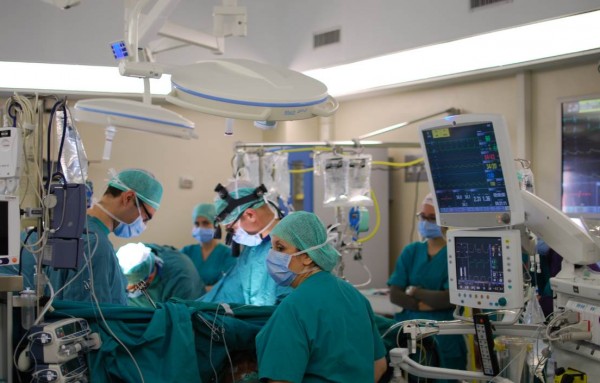-
Tips for becoming a good boxer - November 6, 2020
-
7 expert tips for making your hens night a memorable one - November 6, 2020
-
5 reasons to host your Christmas party on a cruise boat - November 6, 2020
-
What to do when you’re charged with a crime - November 6, 2020
-
Should you get one or multiple dogs? Here’s all you need to know - November 3, 2020
-
A Guide: How to Build Your Very Own Magic Mirror - February 14, 2019
-
Our Top Inspirational Baseball Stars - November 24, 2018
-
Five Tech Tools That Will Help You Turn Your Blog into a Business - November 24, 2018
-
How to Indulge on Vacation without Expanding Your Waist - November 9, 2018
-
5 Strategies for Businesses to Appeal to Today’s Increasingly Mobile-Crazed Customers - November 9, 2018
The Smart Tissue Autonomous Robot Can Perform Surgery Without Doctors
The animal patient not only survived, but its gut was also stitched together better than that of other animals that underwent the same operation by a human operator, either as an open surgery or laparoscopy, or performed by a semi-autonomous robot.
Advertisement
His researchers designed and programmed Smart Tissue Autonomous Robot (STAR) to perform complex surgical tasks.
Officially known as an intestinal anastomosis, the procedure involves connecting two tubular sections of intestines, much like putting together garden hose that’s been cut.
Surgeons still had to supervise the robot, and it’s not ready for patient use yet.
The researchers not only deemed those procedures successful, but found STAR performed better than human surgeons. The study is reported in Science Translational Medicine. And autonomous robots have so far only made themselves useful for digging into rigid body parts, such as bones, while historically failing with slippery, wiggly soft tissue.
Researchers have developed a Smart Tissue Autonomous Robot they call STAR for short that they say will be able to do just that. Human surgeons have extensive training, but our brains don’t operate with that kind of robotic precision.
For now, STAR remains a tool rather than a truly autonomous agent. Similarly, he said, surgical robots could start by giving human surgeons a helping hand.
“Even though we take pride in our surgical procedures, to have a machine or tool that works with us in assuring better outcome safety and reducing complications is a tremendous benefit”, senior author Dr. Peter Kim said in the press conference. Surgery is messy and complicated.
About 45 million soft tissue surgeries are performed in the United States each year.
While robot-assisted surgery (RAS) has increased in adoption in healthcare settings, the execution of soft tissue surgery has remained entirely manual, largely because the unpredictable, elastic and plastic changes in soft tissues that occur during surgery, requiring the surgeon to make constant adjustments.
In future, the robot could assist with tumour removals, appendectomies and other types of soft tissue surgery.
The team compared the system to existing stitching methods including robot-assisted sutures, laparoscopic sutures, and hand-sewn sutures. Fluorescing biomarkers were added to the tissue to highlight the surgical field and guide the robot. “If you can say it saves half an hour, that in itself will have a significant impact on your overall healthcare costs”, Kim said.
The intent is not to replace surgeons, but to expand human capacity and capability, researchers said.
Advertisement
Dr Kim says that the next step in STAR’s development will be to create improved sensors and further miniaturise the tools used by the robot. He hopes to begin human studies in two or three years. Intuitive Surgical, a maker of surgical robots based in Sunnyvale, California has been on the receiving end of lawsuits alleging (which the firm denies) that surgeons were inadequately trained to use its machines or that the robots were defective.





























